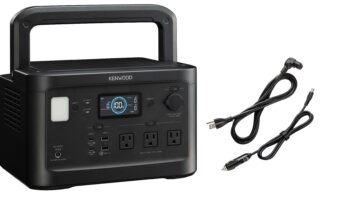Washington — The digital TV transition has been successful, with government and industry members trying to ensure the remaining pockets of consumers who rely on over-the-air broadcasting have the information, converter-box coupons and the boxes themselves to keep watching TV when the June 12 deadline arrives.
That was the message of representatives of the NTIA, Federal Communications Commission (FCC) and the Consumer Electronics Association (CEA) who spoke at the panel entitled, “The DTV Transition — The Final Countdown (And This Time We Mean It)” during the CEA Washington Forum on Thursday.
Jason Oxman, senior VP of CEA, and Bill Lake, DTV transition coordinator for the FCC, both agreed that the number of households that will not covert to DTV by the June deadline “will not be zero,” but that the overwhelming majority of American TV households will move to digital.
Of the 114 million TV households, 97 percent are now aware of the DTV transition. Mary Lou Kenny, partnership manager of the TV converter-box program for the NTIA, said the remaining 3.6 million or so TV households that rely on over the air signals are “the hardest to reach.”
Kenny added that her agency’s “top priority” is to “provide everyone that needs help on the transition gets the information they need. We are most concerned about underserved, vulnerable populations.”
“We feel there will be a spike in activity two weeks before the deadline and two weeks afterward,” said Lake, who added that procrastinators would make the move right before June 12 and those who have installation problems will be busy right after that date.
Lake said that volunteers in Denver and in California in recent weeks, along with members of Americorps, went to consumers houses to install converter boxes for consumers who were having trouble “and they were greeted with hugs after they saw the picture. I think that’s the first time anyone who’s worked for the FCC has gotten a hug for doing their job.”
Kenny said the NTIA will be focusing on 28 markets nationwide to advertise the DTV conversion in ethnic media outlets that are in low-income areas.
Even if some consumers have the proper converter box for their analog sets, they may be too far away to receive an over-the-air digital signal, which is a concern, Lake said. He said that when analog broadcasting ends, digital components could be put higher up on station antennas and “the addition of [digital TV] translators” by broadcasters will help, “but that might take a year.”
Lake noted that 90 percent of the stations that have already converted to digital TV broadcasts have seen “an increase in their audience,” but there are 2 percent that have lost viewers.
When asked if getting digital TV is a fundamental right, Oxman said it was to provide “local news, weather, national security information and the like,” and the transition provides TVs that feature “Dolby Digital sound, excellent video and more stations via multicasting.”
The transition will also be a boon for CE retailers and TV makers because “as we approach the June deadline, the ‘tech-agnostic’ ads from broadcasters highlighting the benefits of digital TV will encourage consumers to buy new sets,” Oxman said.
Kenny reminded that the last DTV coupons will be distributed by July 31 and will expire in November. Oxman noted that there probably will be DTV converter boxes available well after the June deadline, but the consensus of the panel was that there was no sure way of knowing.
While there was doubt on the part of some consumers that the June 12 deadline will hold, none of the panelists speculated that the DTV deadline would be pushed back once again.













